After 18 months in Turkey, I think I can safely say that Turkish hospitality lives up to its (high) expectations. I’ve had the pleasure of encountering it on countless occasions, be it family gatherings, randomly stumbled upon village festivals or a cup of tea while bargaining or chatting with salesmen.
I think many Turks are at their happiest when tables and plates are filled to the bream with delicious food.
A Turkish New Year’s feast
This year will be the third year I celebrate Christmas in Norway and New Year’s in Turkey. While Turks generally don’t celebrate Thanksgiving or Christmas, they do celebrate New Year’s.
And, in a nod perhaps to Christmas and Thanksgiving traditions, many have adopted the tradition of serving turkey for the occasion, a bird rarely offered at any other time of year.
The rest of what’s on offer, however, is unmistakenly Turkish. Meze (lots of it.) Rakı, the Turkish aniseed spirit which has been the alcoholic drink of choice for nearly two centuries.
And, alongside the turkey, the rice pilaff I think of as the Turkish feast pilaf: İç pilavı. Full of warm and comforting flavours, it’s perfect with the sometimes more neutral bird.
Not that it should be eaten only with turkey (to Turks, the combination is a new one). It’s the perfect accompaniment to any roasted or fried meat. Or the star of the show at a vegetarian feast.
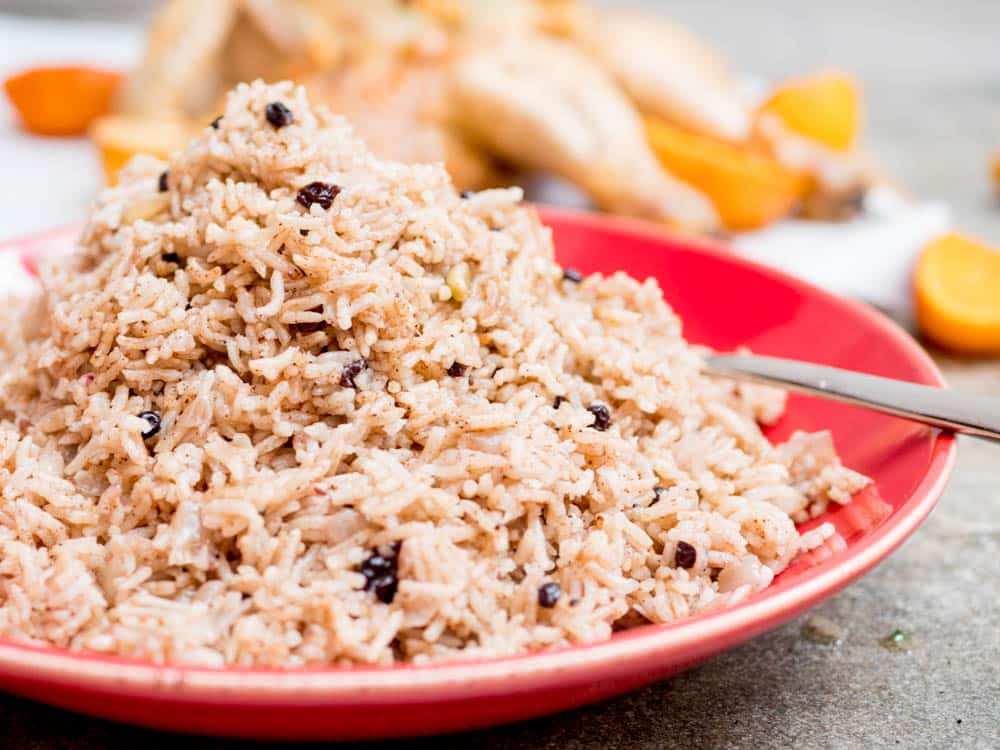
What does the name of the dish mean?
I’ve tried to figure out what’s given the dish its name.
İç is a short word with wide array of meanings, all to do with being inside of something. According to my dictionary, it can be used for anything from interior to internal, offal or inside, depending on the context.
I’ve not yet been able to get to the bottom of the origin of the name of the dish but have narrowed it down to two. Some variants include liver as a vital part of the dish, suggesting iç refers to the inclusion of an offal ingredient. However, the pilaff has also been used traditionally as a stuffing, suggesting the place of cooking rather than any ingredients has given the dish its name.
A few tips for making spiced Turkish rice
Whatever the meaning, as with all pilaffs, it’s important to be precise when preparing the rice to ensure a fluffy result where grains separate with ease. In my experience, this boils down to a few simple tricks.
First, rinse the rice well. I usually do this in my measuring jug in multiple changes of clean water, stirring with my hand in between, before draining.
Second, measure the amount of water. I use just a little less than 1.5 times the volume of water to rice grains. Too much water will make the rice sticky and soggy.
Third, watch the time as if you were boiling an egg.
And equally important: let the rice rest for at least as long as it’s been boiling before taking off the lid.
Of course, different types of rice have different properties and will yield different results. Turks use a type of medium grain rice called baldo. I prefer the long grained basmati, which I find superior in both flavour and texture. A sella basmati is best.
- See also: How to make Turkish rice
In terms of substitions: If you can’t find currants, use raisins. Pine nuts can be dropped, or you could substitute blanched almonds. For an even more luxurious version, Turks often add chestnuts. Feel free to add if you have to hand.
The recipe is enough for 4-6 servings, depending on whether you’re serving other things alongside, too.
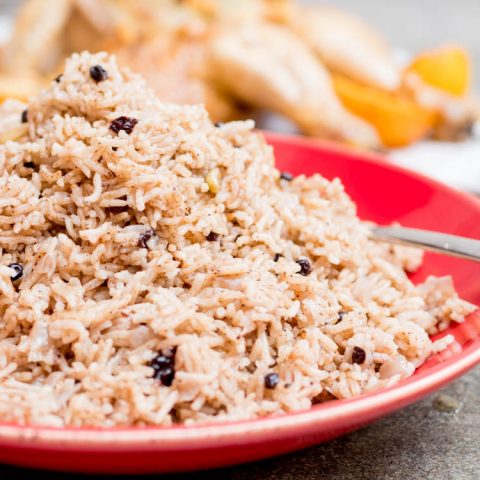
Spiced Turkish rice with currants and pine nuts (İç pilavı)
Ingredients
- 2 Tbsp olive oil
- 50 g butter
- 1 onion, finely chopped
- 50 g currants, or raisins
- 30 g pine nuts
- 2 tsp ground allspice
- ¾ tsp ground cinnamon
- 320 g basmati rice, I use a sella variety
- 560 ml water, chicken stock or vegetable stock
- salt and pepper
How I make it
- Heat a thick bottomed pot over medium heat. Fry the onion with a little salt in the olive oil and butter, stirring regularly, for 5 minutes. Add the currants and pine nuts. Stirring regularly, keep frying until the onion has softened, but not browned, and the pine nuts are golden, another 5–7 minutes.
- Meanwhile, rinse the rice until the water runs clear. I do this in 4–5 changes of water. Drain.
- Add the allspice and cinnamon to the pot. Keep frying for another 30 seconds, stirring constantly. Add the rinsed rice. Fry, stirring constantly, until the liquids have evaporated and the rice is well coated, 2–3 minutes.
- Add water (or stock) and season with salt as if it were soup. Bring to the boil, then reduce the heat to low, pop a lid on and leave for 12 minutes. Take off the heat and leave for at least 10–15 minutes further without taking off the lid, up to half an hour if you can. Check for seasoning and fluff up with a fork just before serving.


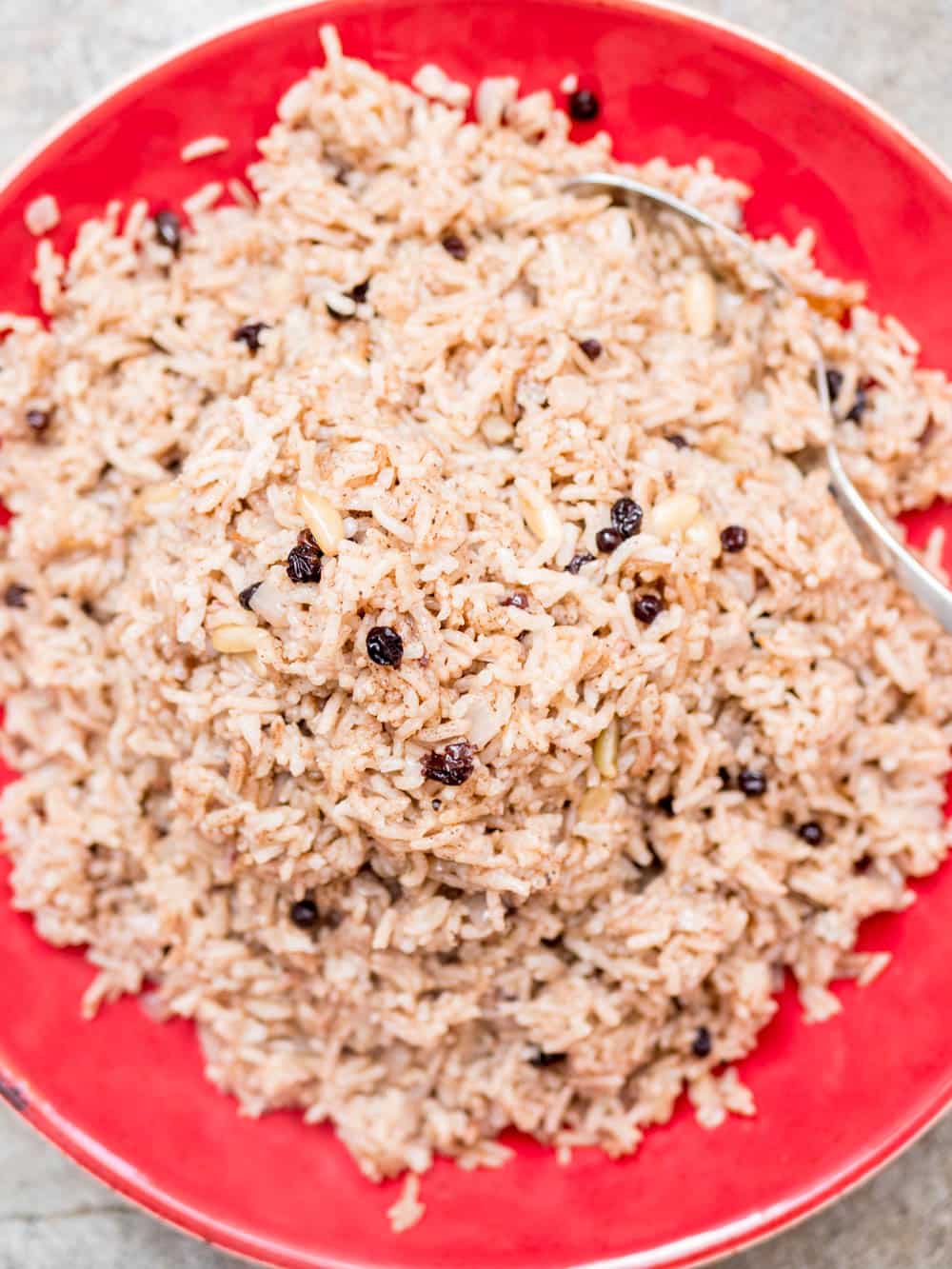


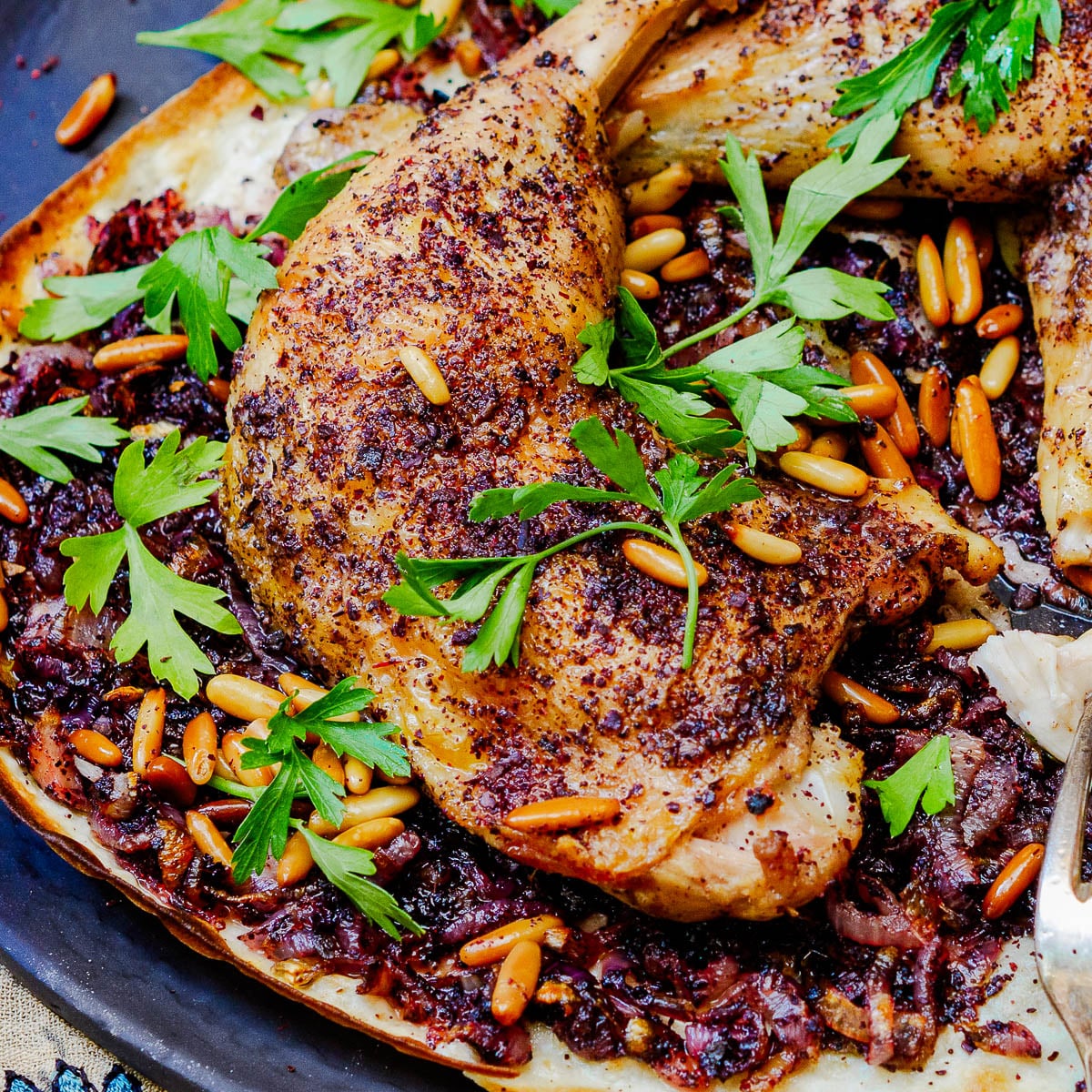
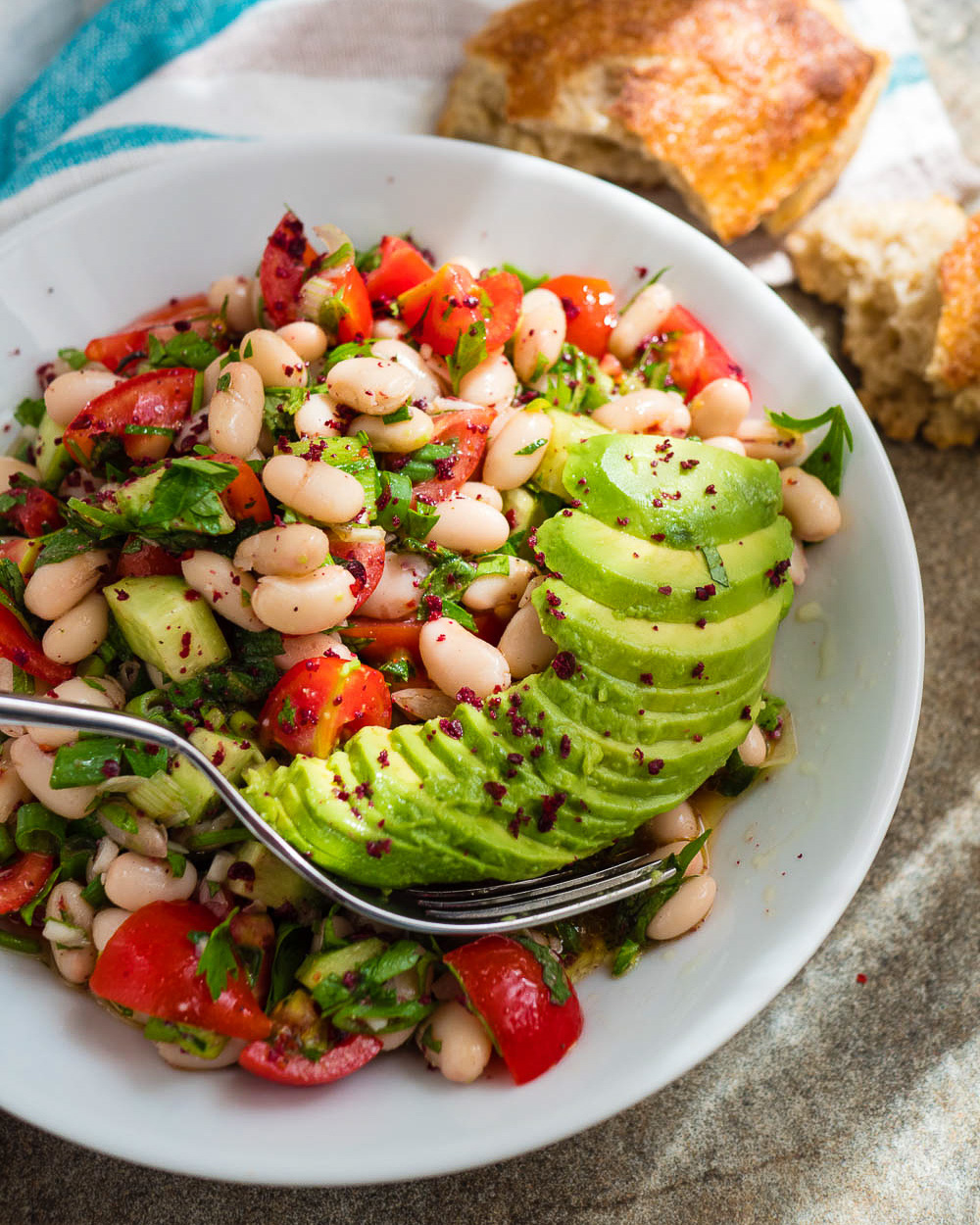
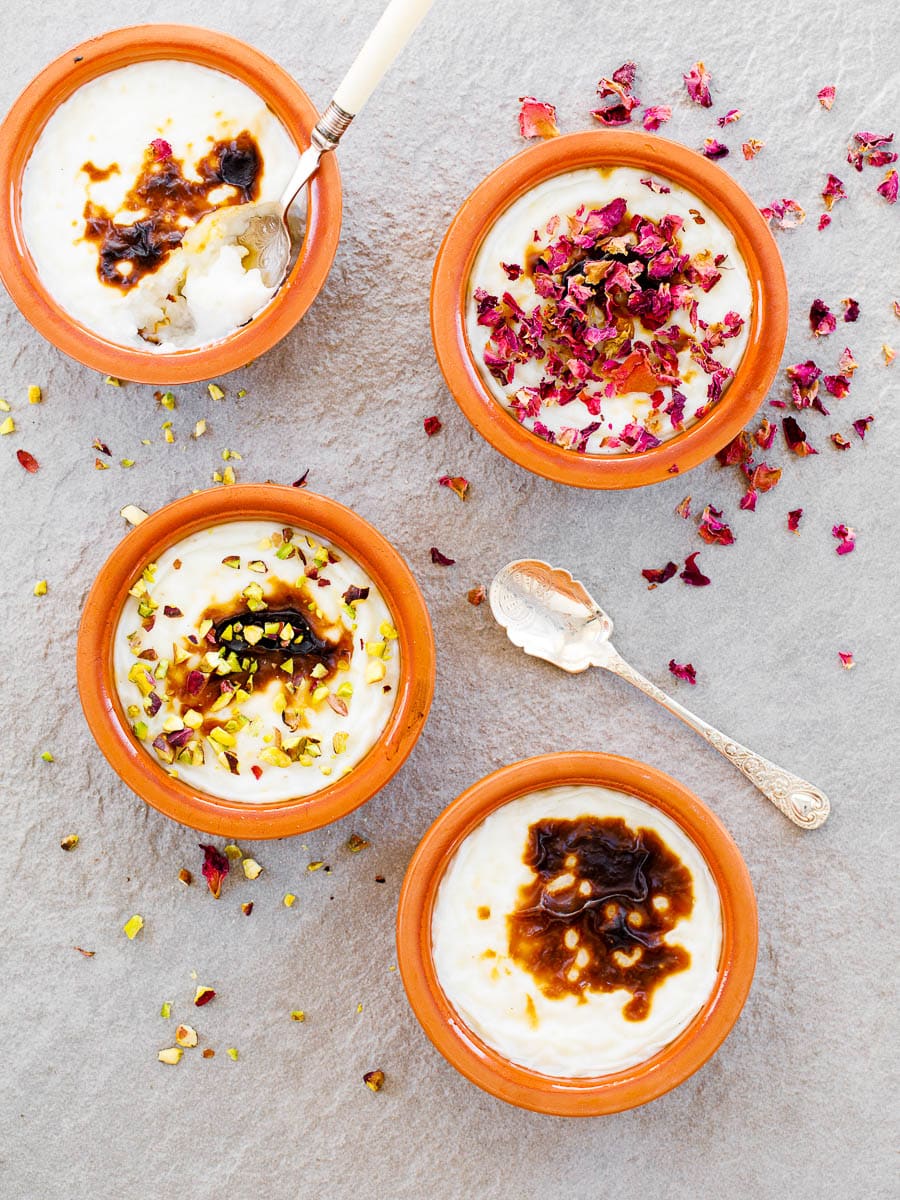
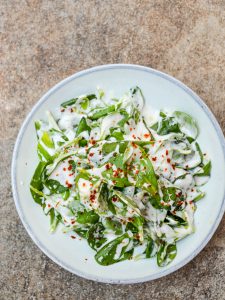
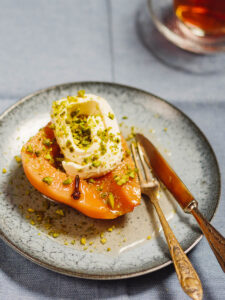
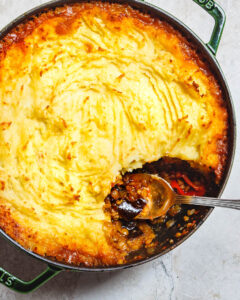
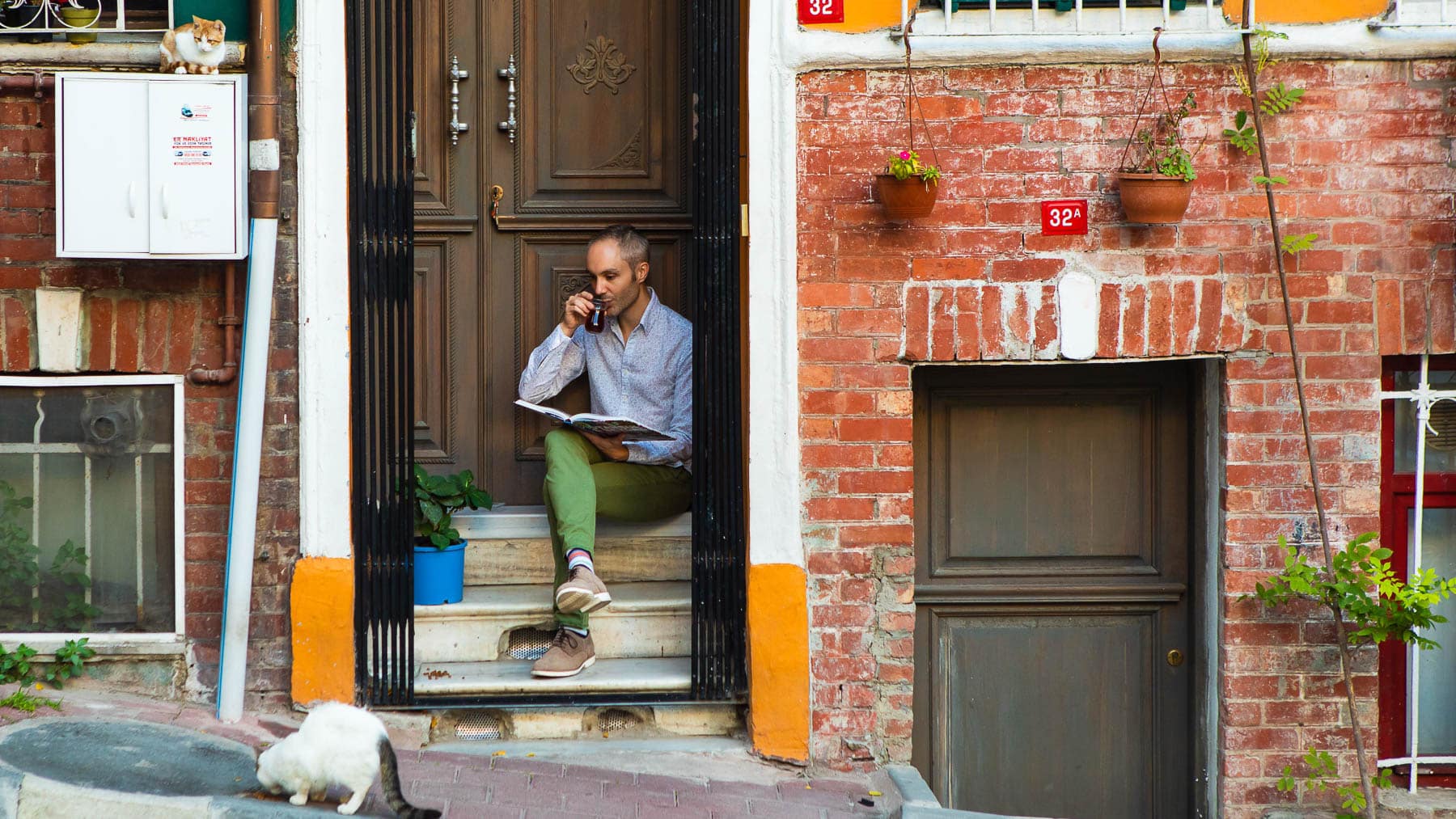



10 responses
My mother-in-law, born and raised in istanbul made this rice at every family gathering. I was amazed to find this recipe verbatim as hers! I never cook plain rice although the dried currants may be hard to find, this is an easy traditional rice from Turkyie.
How wonderful to hear! Glad it could bring back some memories…
Made this for an iftar gathering and never got to taste it. My son and his friends ate it all and said it was delicious. I’m making again tonight so I can enjoy it. Thanks for a lovely recipe
The best compliment! Thank you so much, hope you enjoy it as much as your son and his friends.
Hi I was in Istanbul and ate rice which was with lamb It was a brownish colour and it had a very good taste Can you send me how it is done ? Thanks Ben Farrugia
Hi, I’m not able to help with this, I’m afraid.
Hi there Vidar.
I visited Turkiye in 1995 and travelled on my own through beautiful cities such as Antalya, Bodrum, Cappadocia and Instanbul.
I purchased a traditional Turkish cook book on a tour in Instanbul and my Turkish Rice has been such an enormous hit amongst my family and friends. In the book i purchased, the recipe calls for a bunch of fresh dill diced and blended into the rice at the very end of resting.
My thoughts and wishes are with our dear friends in Eastern Turkiye. X
Thanks so much for your kind comment. Fresh dill is a wonderful idea, I shall try that myself next time! All the best.
Hey Vidar, I am planing to cook Ic Pilav tomorrow for thanksgiving but I can’t really cook any rice other than baldo. Since I am in Copenhagen right now I have to use basmati as you did but I am wondering If 1:1.5 water ratio is going to be enough? We normally cook basmati with 2 cups of water in Turkey.
Thanks in advance.
Yes that should work, I always use basmati rice for this recipe.